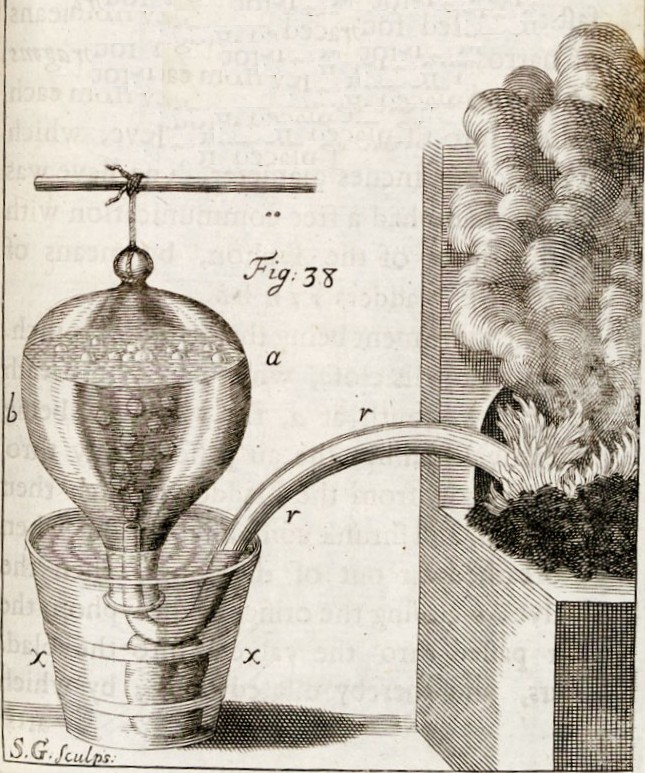
Stephen Hale’s Pneumatic Trough, 1727


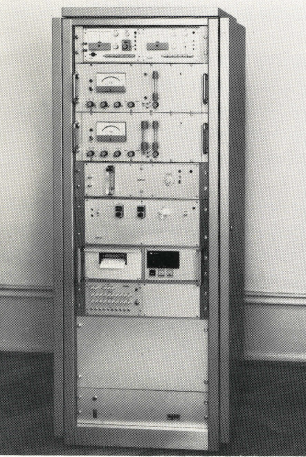
From a Fenyves & Gut sales brochure kindly provided by Emanuele Isnardi.
“One possible extension of the S basic unit is designed to determine the gas exchange or G or perform ergospirography, respectively, this representing a SG assembly. Unlike rival products this unit operates without valves, i.e. under optimum physiological conditions. For it should be noted that there are still systems on the market which require the subject to inhaled through a mask fitted with inspiration valves and exhale through a hose fitted to the mask. Of course such systems cannot work satisfactorily since they involve inspiration valves and because dead-space air is re-inhaled from the expiration hose. Our system has overcome these drawbacks.
Principle of measurement: the expired gases are continuously drawn off while changes in concentration levels occur. However, the average values necessary for further processing (e.g. O2 uptake) are drawn off in proportion to the expiratory flow rate by a special pump of our own design which can be modulated very rapidly. The expirate is then stored in a small collecting vessel. The resulting weighted samples are then analyzed in on-line analyzers for their O2 and CO2 concentrations (ΔFO2 and ΔFCO2 respectively).
Essentially the G apparatus consists of a slide-in unit for extraction proportionate to the flow of respiratory gases during expiratory phases. A device for averaging and converting the pulsating gas flow to a steady state required by the analyzers is included. The necessary equipment comprises O2 and CO2 and, optional, N2 analyzers (see under A), as well as a multi-channel compensated direct recorder (see under R). We recommend our slide-unit for determining the MV directly (unnecessarily if the assembly includes a computer) because it no only reduces working time, but also compensated for the time-lag occuring between the ΔFO2 and respectively, ΔFCO2 quantities on the one hand, and the minute volume on the other.”
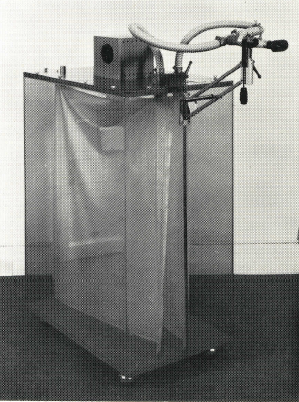
From a Fenyves & Gut sales brochure kindly provided by Emanuele Isnardi.
“Construction: A transparent plastic box on castors houses two bags containing a maximum of 100 litres each for the inspiratory and expiratory air respectively. A valve system connects the bags to a pneumotachograph which measures the inspiratory and expiratory air. A three-way stopcock makes it possible to let the patient breathe ambient air or air from the bag according to choice. The expirate can be collected in the expiratory bag or released to the atmosphere. Device for filling and fan for deflating the bags. The gas concentration can be measured in the bags and continually monitored at the mouth. Additional equipment: gas analyser, depending on test objectives (see under A), multi-channel compensated direct recorder (see under R), computer for direct MV determination.”
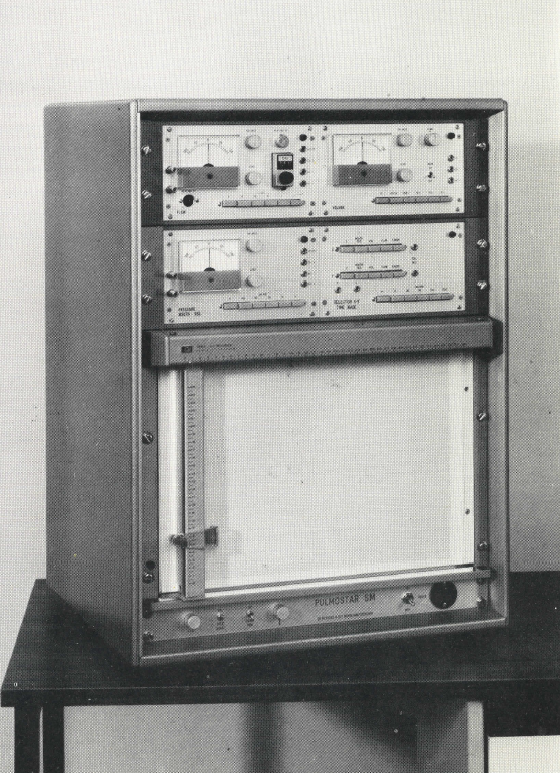
From a Fenyves & Gut sales brochure kindly provided by Emanuele Isnardi.
“The S basic unit may be extended to a SM assembly by adding a slide-in unite for the measurement of oesphageal pressure, this making tests of respiratory mechanics possible. As the zero-flow points (i.e. the points of inversion) can be marked automatically, it is possible to determine the elastic axis in the diagrams of mouth volume in relation to oesaphageal pressure even under uncertain conditions (as they often occur in patients suffering from emphysema). This makes evaluation considerably easier.”
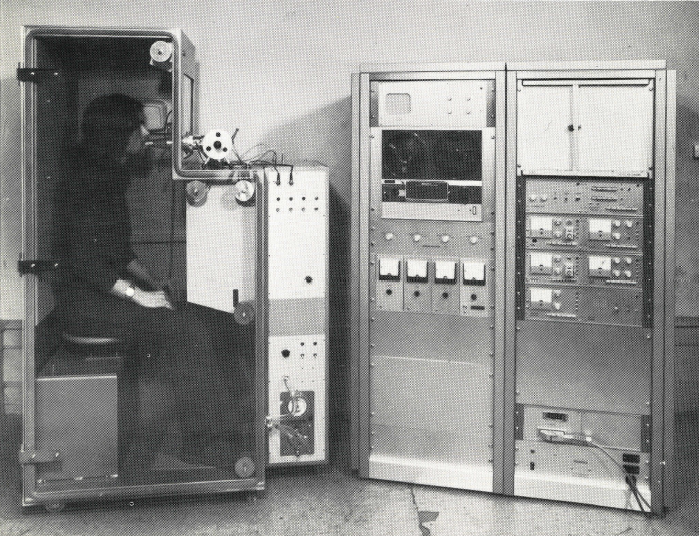
From a Fenyves & Gut sales brochure kindly provided by Emanuele Isnardi.
“Our PULMOREX body plethysmograph incorporates the pressure-corrected flow principle, but also be equipped with the constant-volume mode of operateion in addition. Presently, this type of body plethysmograph is probably the most perfect.
In order to explain the function of this plethysmograph we will proceed from the simpler constant-pressure plethysmograph. In 1960 Mead described his “volume displacement” plethysmograph which he used in conjunction with a Krogh spirometer to determine changes in chamber volume. We replaced the Krogh spirometer with a pneumotachograph and a linked integrator. The resulting assembly is an “open-box” “volume-displacement”, i.e. constant-pressure plethysmograph.”
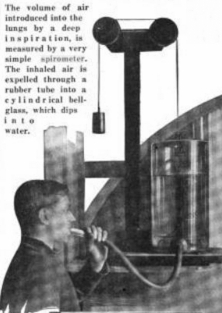
From “The scientist and the athlete. The physiological laboratory of the French military school at Joinville” by Jacques Boyer, Scientific American, May 8, 1915, page 293.
From Bioenergetics and Grown by Samuel Brody, Published by Reinhold Publishing, NY, 1945. Chapter 12, page 314. Found on the website BeefEfficiency.org.
From Patrimoine Scientifique et Technique De L’Universite De Strasbourg. Described as made by the Pixxi family in Paris who were manufacturers of scientific instruments. Stated to be manufactured before 1850.